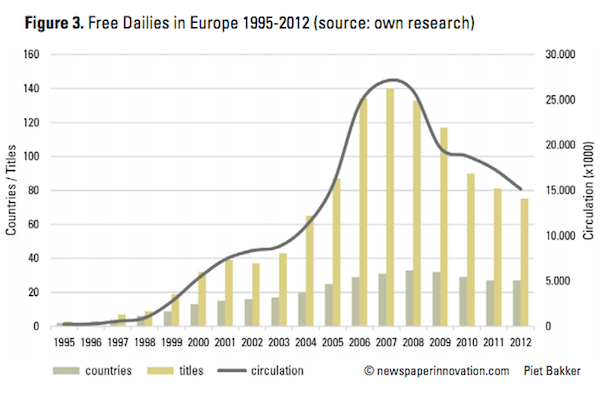
Another year, another chart: Bakker has just updated with 2013 data:

In other words, more of the same. WAN-IFRA did a brief email interview with Bakker about the state of affairs:
Since free dailies have only one source of income — advertising — the economic crisis hit this sector harder than other print media. Apart from that, there is a general decline in print circulation, probably because younger generations don’t use print that often. This generation was always rather interested in free dailies but now increasingly uses mobile phones during the time that they used to read a free newspaper. And just before the crisis, many free titles were launched (in 2005-2007), which resulted in fierce competition among free papers, hurting the business model even more.
Bakker is also reviewing the situation for free dailies across the world in a 67-part series — the man has stamina! So far, he’s run through Albania, Andorra, Austria, Belgium, Bulgaria, Croatia, the Czech Republic, and Denmark. (Estonians: Get ready!) He expects to finish Europe by mid-February, then move to the rest of the world.
One comment:
Tnx Joshua. The occasion for this 67-part series (Estonia is done, Finland next) is the 20th anniversary of Metro next month. I will ‘do’ Sweden on February 13. Before the end of that month I will publish a new Europe graph. And move on to the rest of the world…
Trackbacks:
Leave a comment